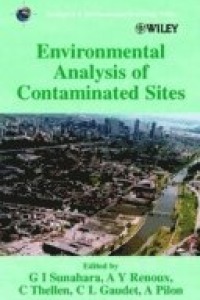
Liknande böcker
Essentials Of Environmental Toxicology
Bok av Jurex Cuenca Gallo
Environmental toxicology is a relatively new field, with its origins in the mid-20th century. The modern science of toxicology, on the other hand, was born in the early 19th century, and by the later decades of that century, some scientists had begun to consider the effects of toxic substances that had been released into the environment. Environmental toxicology is concerned with the assessment of toxic substances in the environment. Environmental toxicology draws heavily on principles and techniques from other fields, including biochemistry, cell biology, developmental biology, and genetics. Among its primary interests are the assessment of toxic substances in the environment, the monitoring of environments for the presence of toxic substances, the effects of toxins on biotic and abiotic components of ecosystems, and the metabolism and biological and environmental fate of toxins. Organisms can be introduced to toxicants at various stages of their life cycle. The degree of toxicity can vary depending on where the organism is found within its food web. Bioaccumulation occurs when molecular compounds are stored in an organism's fatty tissues. Over time, this leads to the establishment of a trophic cascade and the biomagnification of specific toxicants. Biodegradation releases CO2 and water as by-products into the environment. This process is typically limited in areas affected by environmental toxicants. Harmful effects of chemical and biological agents can include toxicants from pollutants, insecticides, pesticides, and fertilizers, all of which can impact an organism and its community through shifts in species diversity and abundance. Resulting changes in population dynamics impact the ecosystem by altering its productivity and stability. Toxins affect the environment and organisms in a variety of ways, from having little negative impact on certain abiotic factors or resistant organisms to killing animals and destroying major components of ecosystems. The extent of damage depends on the type and structure of the toxic substance; the age, the size, and the species of the organism; and the temperature and the physical and chemical characteristics of the environment. Knowledge of how these factors interact is critical to understanding how best to prevent or reduce exposure or remove a toxin from the environment.







